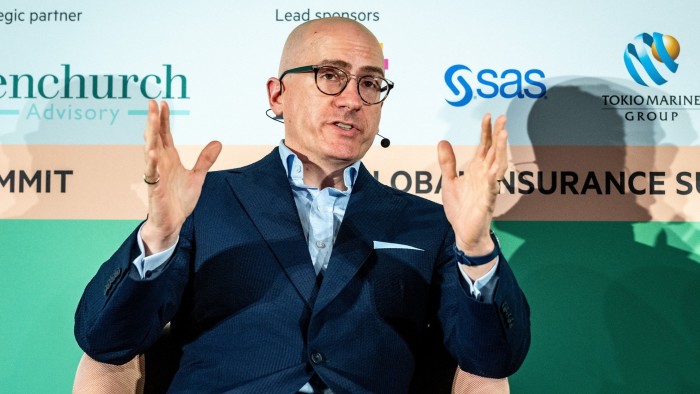Unlock the Editor’s Digest for free
Roula Khalaf, Editor of the FT, selects her favourite stories in this weekly newsletter.
Part of the US commercial insurance market is on the verge of “breakdown”, executives have warned, as insurers withdraw US casualty coverage because of a rise in payouts that industry groups blame on “legal system abuse”.
The cost of US casualty insurance, which businesses buy to protect themselves against legal claims from employees, customers or others harmed by their operations or products, has climbed for 23 quarters in a row, according to the world’s largest insurance broker Marsh.
Prices for the insurance segment rose 8 per cent in the first quarter of this year, despite insurers carving out new exclusions and lowering the total they promise to pay out for any claim.
That could soon mean insurers withdraw from the market altogether, the chief executive of one leading insurance carrier said.
“It won’t be a question of how much you’re willing to pay — the cover won’t be available,” Everest chief executive Jim Williamson said at the Financial Times’ insurance summit last week. “No one will offer it at any price. That’s when you start to see a real breakdown.”
New exclusions had been introduced aimed at emerging trends in litigation, Marsh said, including claims stemming from corporate data privacy violations, so-called “forever chemical” pollutants, sexual abuse, human trafficking, and assault claims against real estate and hospitality groups.
But tighter contract wordings have not been enough to stem the tide of claims, industry executives said.
Insurers have launched lobbying campaigns for new laws to make it harder to sue companies, and pointed to the growth of the litigation finance industry, which provides funding for corporate legal disputes in exchange for part of any payout.
Everest issued a profit warning to investors earlier this year, noting that it had set aside $1.7bn in reserves to cover losses from its US casualty books. Williamson said the company was now raising rates for excess liability insurance — used to cover big claims that exhaust primary policies — by between 20 and 25 per cent a year.
“We’re still in the phase where you can get the cover if you’re willing to pay,” he said. But he added: “that’s an enormous inflationary factor for businesses.”
Williamson said that a combination of “fraud, legal system abuse and runaway jury verdicts” was triggering “a breakdown of the US legal system”. The large payouts were also a “cultural issue”, he added, as huge jury awards for damages had become “normalised”.
The comments come after Chubb chief executive Evan Greenberg last month urged brokers and insurers to cut ties with litigation funders, which insurers have argued encourage excessive litigation. Greenberg said the US insurance company would cut out lawyers, bankers and asset managers who worked with litigation funders.
Christian Dunleavy, chief executive of reinsurer Aspen Bermuda, said at the Financial Times summit that casualty insurance customers, such as long-haul truckers buying cover for their fleets, could struggle to obtain coverage in the coming months.
He added that despite the long price rally, he doubted that there would be new entrants bidding down rates to more competitive levels. On the contrary, he said, he expected insurers to withdraw from some US states.
“There is enough fear, and there is enough focus on trend in the legal system, that we think there’s a lot of price discipline,” Dunleavy said. “Ultimately, it flows down to the consumer.”
https://www.ft.com/content/5ff149b1-47bd-44b0-89a9-e1a9aee142a5


